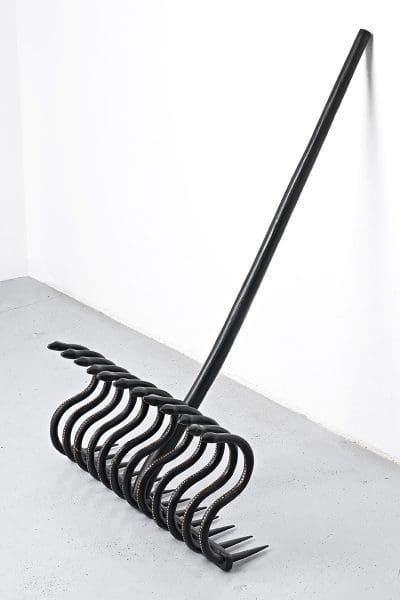
Making Space at the Table
NAP Contemporary’s group show, The Elephant Table, platforms six artists and voices—creating chaos, connection and conversation.




If there’s one thing that brings together the disparate movements of contemporary art practice, and in art history, it’s that humans are always at the centre. Artists’ ideas and/or hand inform and mold their subjects – and this imposition is at times violent. Take Picasso’s treatment of women, and the colonialists’ depiction of settler land dripping in Western romantic trends.
With the environment currently showing cracks, artists are reconsidering their relationship with the natural world around them. This includes art made under the perplexing philosophical cluster Object-orientated ontology (OOO), which considers the agency of objects, to Ecosex, which asks the audience to view nature as a lover. In OOO humans are no longer at the world’s center, while in Ecosex the relationship is symbiotic; there must be care both ways to sustain both parties.
Sensual Nature, at the Fremantle Arts Centre in Perth, is a group exhibition in the vein of the latter – bringing together 12 artists from across Australia who have a sensory relationship to the materials that they work with. Participating artist Lia McKnight sparked the idea after proposing a solo show at Fremantle Arts Centre and curator Ric Spencer saw the potential for a group exhibition.
In light of this, he says, “the idea for the exhibition was to look at our relationship with nature, how it is today, but through ideas of a phenomenological experience with nature, or a sensual kind of experience of natural objects.
We can look at this show from a sense of not only understanding our place from a contemporary notion of nature, but understanding how we physically and psychologically relate to organic forms.” McKnight mentions spiritualists and philosophers who also informed this approach. “I was talking to Spencer about David Abram, who’s a philosopher and cultural ecologist, and he talks about animism, in an ecological and a philosophical sense. He’s interested in that kind of spiritual connection with nature. He talks about a dynamic exchange, in which there’s a potential for people to not just perceive nature and enjoy nature, but to have a reciprocal exchange with nature.” She also mentions Eckhart Tolle, who in his book Stillness Speaks discusses “nature awaiting us and having its own sense of perception.”
“After watching the destruction of bushland near my home I started to think about the objects that I’d collected,” explains McKnight. “They started to become sacred objects. I began to think about the idea of totems and a spiritual connection to places, as well as a physical connection.” Artists in the exhibition also include Tane Andrews, Sarah Elson, Penny Evans, Miik Green, Juz Kitson, Andrew Nicholls, Julia Robinson, Nalda Searles, Holly Story, Heather B. Swann and Angela Valamanesh. Andrews’ delicate marble sculpture of a chrysalis appears as a symbol of etamorphosis with pudendum associations, an esthetic that also permeates Valamanesh’s erotic sculptures that bring together orchid and insect forms.

Searles is presenting a skull woven from grass and Evans, a Kamiloroi artist, is creating ceramics which reflect a de-colonialist approach of ‘slowing down.’
“The artists in the show look at a sensuality of tactility,” says Spencer. “There’s a real lushness in their making and use of materials, and I guess for me it’s about sensory immersion as a way of looking at art making. The works in the show bring together different materials – ceramics, textiles, metal and leather works. There are also quite a few drawings and large paintings. It’s a bit of a mix but a theme throughout is that these artists are immersing themselves in the process, and through the idea of transformation and how materials come together. In the work there’s an immediate relationship between organic, natural and made form.”
Sensual Nature
Fremantle Arts Centre
29 March – 20 May